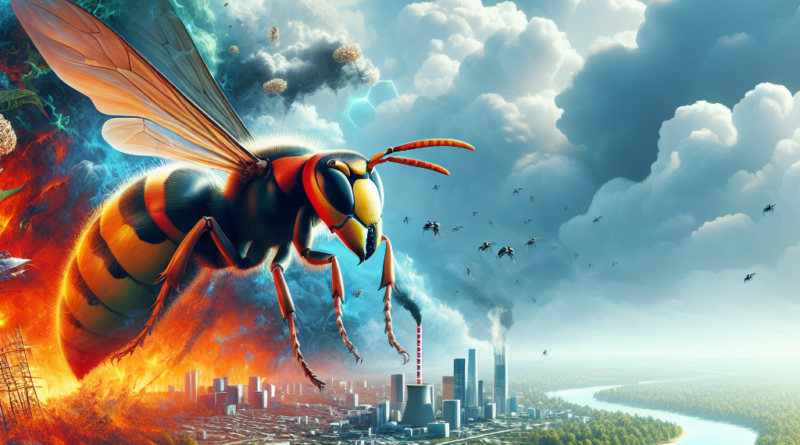Beware of the Asian Hornet: What You Should Absolutely Avoid
The Asian Hornet: A Threat to Ecosystems
As summer approaches and temperatures rise, nature awakens, bringing back a familiar buzz into our lives: wasps.
However, this year we need to be particularly cautious of a specific species capable of causing significant damage to the ecosystem – the Asian hornet, also known as Vespa velutina.
Having colonized France in 2004, the Asian hornet has made its way to Italy.
Starting from the French coast in 2013, the Asian hornet was first spotted in Liguria.
From there, it spread across Northern Italy, with sightings in regions such as Piedmont, Tuscany, Emilia Romagna, Lombardy, and Veneto.
Distinguishing Features and Impact
How does the Asian hornet differ from a regular wasp? This species is very dark, almost entirely black with small yellow spots on the abdomen and at the tip of its legs.
In contrast, the European hornet has more yellow on its body and hints of red.
They also differ in size, with the Asian hornet being larger.
More than a problem for humans, the Asian hornet poses a significant threat to nature: voracious eaters, they feed on flower nectar and drive away other insects, disrupting the ecosystem.
Furthermore, they are predators of bees, lingering near beehives and causing immense stress to the colonies, preventing the bees from leaving.
This fear-induced behavior leads to a halt in egg-laying, weakening the colonies until their demise.
Encounter with an Asian Hornet
If one comes across an Asian hornet, there is no need for alarm.
While it can sting, just like a regular wasp, it poses similar risks to those allergic.
Encounters with Asian hornets are less common than with bees or wasps.
If you do encounter one, you may try to capture it in a container to observe it closely before releasing it back into nature.
Presently, the Asian hornets are queens, capable of building nests producing thousands of offspring.
The vital action to take is not to kill them.
Not only could you unintentionally harm a European hornet, but no living creature deserves to be killed; they should be left to express their natural instincts in the wild.
It is essential to coexist with these hornets.
To prevent them from harming bees, many beekeepers are employing traps to catch and release them far away.
If stung by an Asian hornet, symptoms such as swelling, redness, itching, and pain may occur.
The first step is to check for the stinger; if present, remove it with tweezers.
Applying an ice pack can help alleviate the pain.
Utilizing cortisone cream can aid in speeding up the recovery process.
For further reading on the threat posed by Asian hornets in Italy, check out Invasion of Killer Wasps in Italy: Risks for Humans and the Environment.




